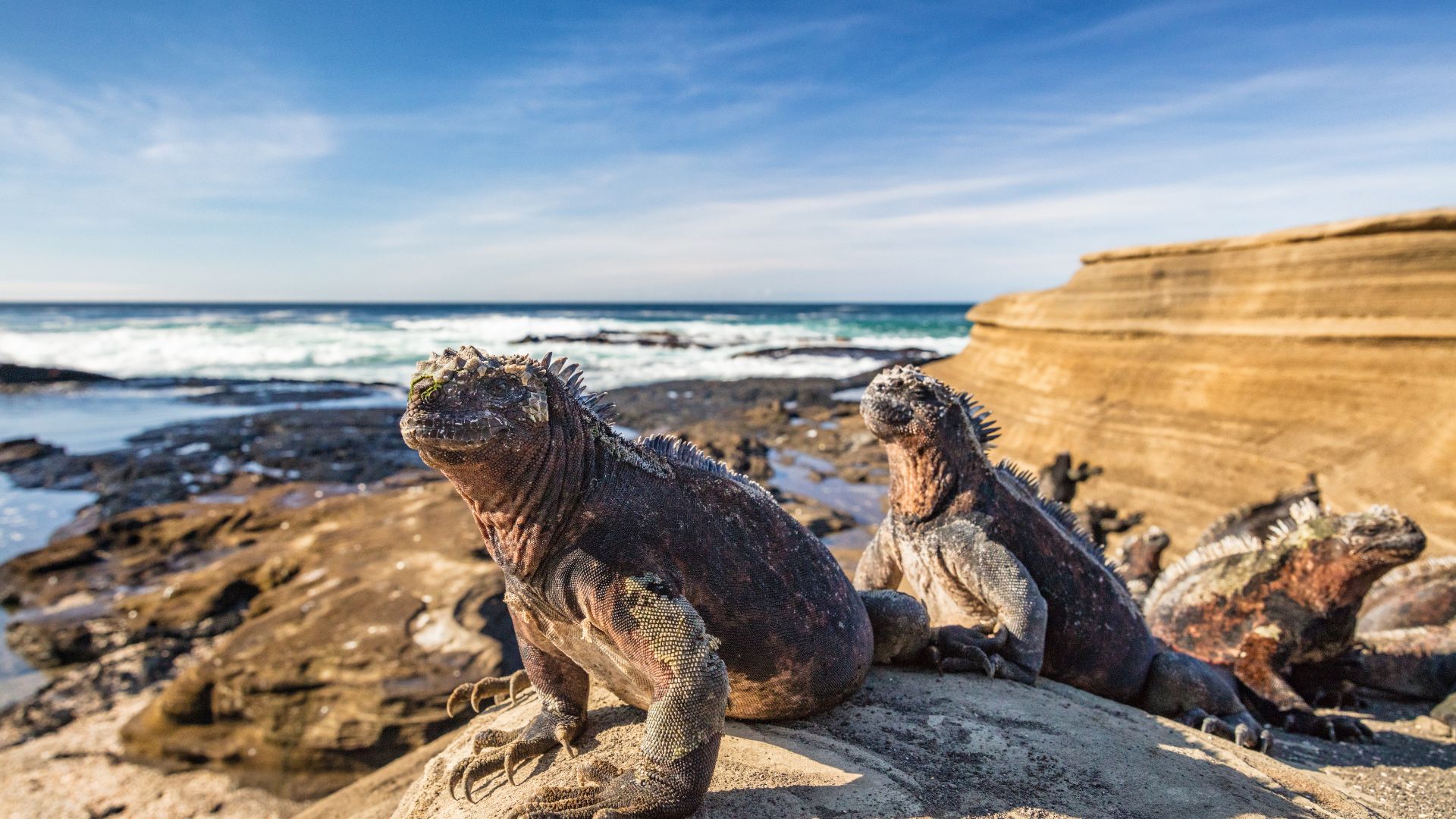This 11-day cruise through the Galapagos offers an in-depth exploration of the southern, central, and western islands, featuring a rich variety of wildlife, volcanic landscapes, and snorkeling opportunities. From the giant tortoises of Santa Cruz to the penguins and flightless cormorants of Fernandina, each day reveals the unique ecosystems of the archipelago, making it an unforgettable journey for nature lovers and adventure seekers alike.
- Coastal Lagoon Exploration.
- Relaxation with Sea Lions.
- Tortoise Observation.
- Flamingo Observation and Snorkeling.
- Airport assistance (Quito or Guayaquil, if flights are booked through LT)
- Transfers in Galapagos
- Accommodation on board in double cabin
- All meals during the cruise
- Naturalist Bilingual Guide level III
- All visits and excursions according to the itinerary
- Snorkel Gear(mask, tube and fins)
- Kayaks
- Unlimited purified water, coffee and tea
- Round trip flight to/from Galapagos
- Galapagos National Park Entrance fee USD 200 p/p
Galapagos Ingala card USD 20 p/p
- Tips
- Local Taxes
- Travel Insurance
- Meals and services not mentioned above
- Alcoholic drinks and soft drinks
- Extras and personal expenses
Itinerary
Day 1 (Monday) : San Cristobal: Interpretation Center
AM: Flight to Galapagos
On this day, you will fly to the Galapagos Islands. Due to the Galapagos Government, a fee of 20 USD must be paid for the migration control card.
Once in San Cristobal, passengers must go through an airport inspection point to ensure that no foreign plants or animals are being introduced to the archipelago. Also, this inspection point is where passengers have to pay for the entrance to the Galapagos National Park under the following parameters:
As of September 2024, Foreign Passengers $200 and Children $100 (under 12 years old).
Later on, your guide will pick you up and will carry your luggage to the bus. Passengers will arrive on a motorised boat called a panga at the Catamaran Seaman Journey.
PM: Gianni Arismendy Environmental Interpretation Centre
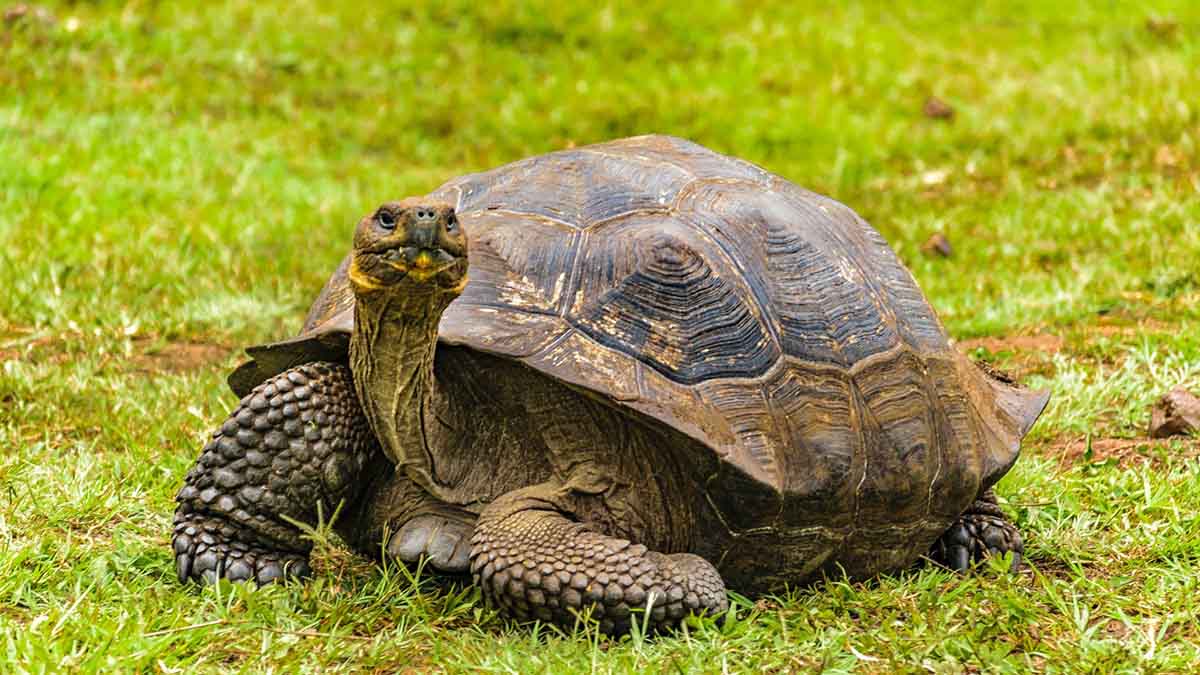
Photo: DanFLCreativo
This is an interpretation centre with exuberant gardens and stunning ocean views. Visitors to the Interpretation Centre can learn about the geological and human history of the islands, conservation facts, and natural history. This is the oldest museum of Natural History in the Galapagos Islands, which attempts to preserve the archipelago. It is inspiring and motivating to watch and learn about all of their research and attempts.
Day 2 (Tuesday) : San Cristobal: Punta Pitt & Lobos Island
AM: San Cristobal Island, Punta Pitt

Photo: marktucan
Punta Pitt is located at the eastern end of San Cristóbal Island, boasting a beach of approximately 90 meters and several natural viewpoints overlooking an eroded hill made of volcanic tuff.
A 1,400-meter trail leads from the beach called Oliviana to the hill’s summit, which displays various colors due to different types of lava.
The strong winds prevailing on the hill have naturally eroded it, resulting in fantastic and memorable landscapes reminiscent of scenes from a science fiction movie.
The sand of Oliviana Beach is adorned with a beautiful olive-yellow hue, adorned with bright crystals from lava erosion and shells. Here, sea lions bask in the sun while observing the flight of frigatebirds, pelicans, herons, and seagulls.
Pitt Islet is one of the rare locations where all three species of boobies (blue-footed, red-footed, and masked) and the two species of frigatebirds can be observed within the same vicinity.
PM: Lobos Island, San Cristobal Island

© Latin Trails
Isla Lobos is a small, flat islet. The name Isla Lobos is given to it because it is home to several sea lions, which frolic on the beach; their brown fur stands out against the white sand. Isla Lobos is approximately 20 minutes by boat (10 kilometres) from Puerto Baquerizo Moreno on San Cristobal Island. Classified as a tourist diving site, it has 2 piers from which tourists can explore the bottom of the ocean accompanied by sea lions.
In its waters, a protected channel offers a fantastic place for snorkelling. An 850-metre-long trail runs along the island, connecting the two piers. The estimated time of the walk is one hour, during which you can observe coastal vegetation of saltwater-tolerant plants. Its name is due to the two species of sea lions that inhabit it. The sea lions are related to the California sea lions, while the two-furred sea lions, known as fur seals, have their origins in Antarctica.
The pools with salty water behind the sand dunes were used by the fishermen as a salt mine in order to preserve food for the local population. Among the fauna you can observe the Chatham Mockingbird and the San Cristobal Lava Lizards, both species are endemic to the island and unique to the area. Furthermore, you will see the Galapagos turtles and with luck, the little bird known as the Pájaro Brujo in Spanish, an endemic species in San Cristobal Island.
The vegetation covers all the route, where you can find species like the candelabrum cactus and carob trees. Located on the north coast of Isla San Cristobal it is a peaceful place with white sand and crystal water, a perfect combination for an incredible stay.
Breakfast / Lunch / Dinner
Day 3 (Wednesday) : Española Island: Gardner Bay & Suarez Point
AM: Gardner Bay
Located on the northeastern coast of Española Island, Gardner Bay offers an excellent beach for relaxing, swimming, and even kayaking, along with the opportunity to observe sea lions (Zalophus wollebaki). Here, we can also spot sharks in the crystal-clear ocean waters.
At this location, you can observe three species of Darwin finches:
- A subspecies of the large-billed cactus finch (Geospiza fuliginosa), which resembles the large-billed terrestrial finch;
- The small-beaked ground finch (Geospiza fuliginosa);
- The singing finch (Certhidea Olivacea), another endemic subspecies. Both resident and migratory birds can be observed in this area.
PM: Suarez Point
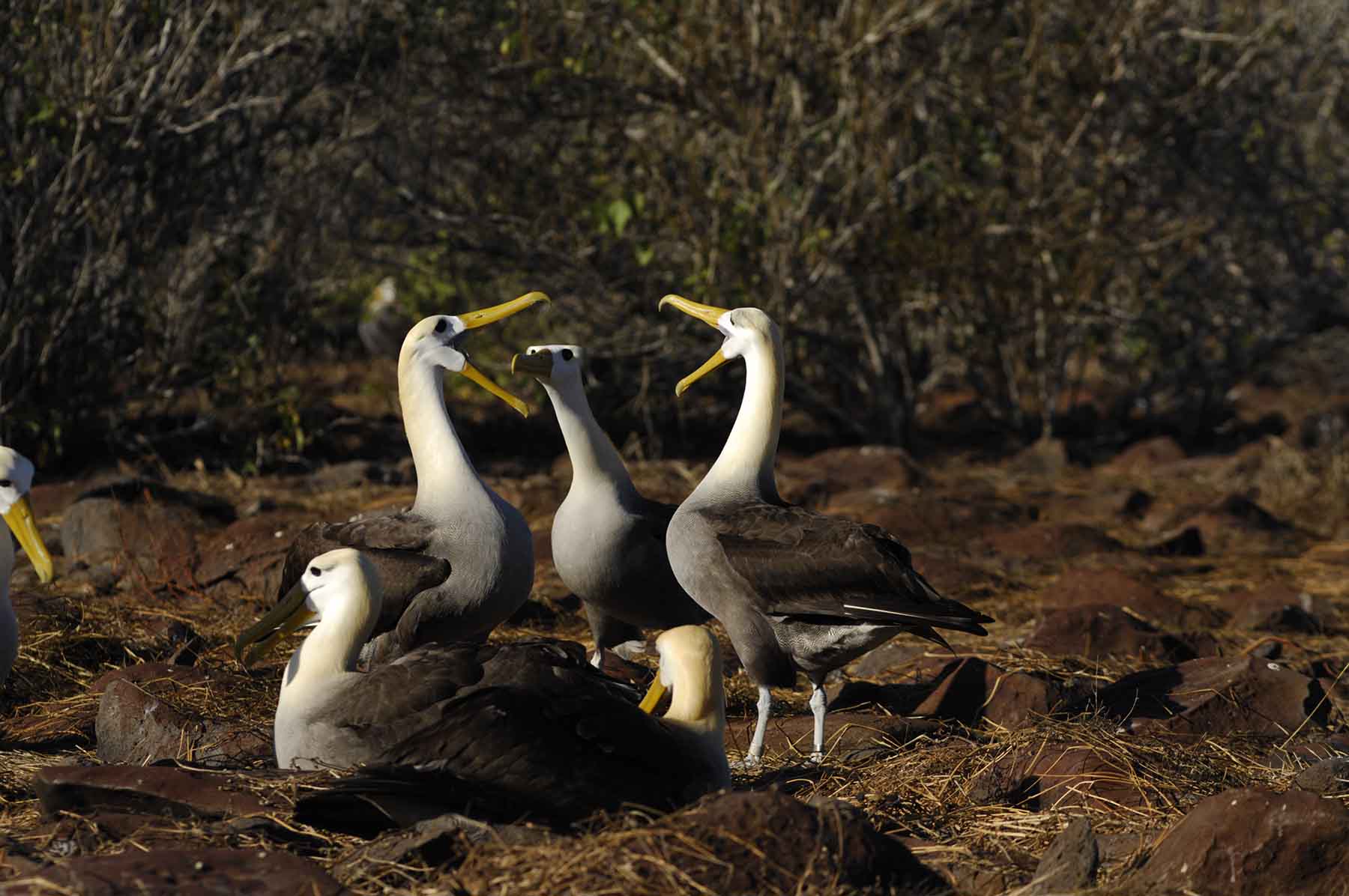
© Latin Trails
This area is excellent for spotting blue-footed boobies, albatrosses, and Nazca boobies. Situated on the oceanfront, it is a beautiful site where the large waved albatrosses use the cliff as a launching pad. The famous attraction here is the magnificent blowhole, which spouts water high into the air, reaching heights of at least 50 to 75 meters. This site offers wonderful photography opportunities.
Breakfast / Lunch / Dinner
Day 4 (Thursday) : Cormorant Point, Champion Islet & Post Office Bay
AM: Cormorant Point, Champion Islet

© Latin Trails
This site offers the best flamingo lagoon in the Galapagos; it is also one of the largest in the islands. It’s between two tuff lava cones that give the area a special atmosphere. Besides flamingos, there are various species of shorebirds; the most frequent are common stilts, white-cheeked pintail ducks, and other migratory birds. It is very interesting to see the two distinct beaches: “The Green Beach” (due to its high percentage of olivine crystals in the sand) and the “Flour Sand Beach” which is made up of coral.
After the interesting walk, the group is taken to Champion Islet, a great place to enjoy snorkelling and underwater wildlife. Some animals that can be seen are sea turtles, sea lions, and multiple fish thanks to the nearby coral reef.
PM: Post Office Bay

Photo: stockcam
Historically, this site is the location of a wooden barrel that was placed in the 18th century by the crew of a whaling ship. Mariners and tourists have used it since this time as a post office. The idea is to carry letters or postcards to their destination by hand. Additionally, this site was the landing area for some of the first colonists. This day’s afternoon is a relaxing time for visitors to enjoy the beach and the beauty of the Galapagos.
Breakfast / Lunch / Dinner
Day 5 (Friday) : Fausto Llerena Breeding Centre & Highlands
AM: Fausto Llerena Breeding Centre

© Latin Trails
The Fausto Llerena Breeding Centre is located in the Galapagos National Park, on Charles Darwin Avenue, at a distance of 1 km from the Gus Angermeyer Tourist Pier. After a 40-minute walk, the attraction is part of the network of visitor sites of the Charles Darwin Foundation.
The visit starts at the information booth of the Galapagos National Park Service (SPNG). The trail leads to the Van Straelen Interpretation Centre, then to the breeding centre. From there, an elevated circular path begins, made of wood, from which you can observe Lonesome George and the tortoises of Española Island. It ends at the tortoise exhibition corral.
PM: SANTA CRUZ, HIGHLANDS

© Latin trails
You will be taken by bus to the first visit to Ranch Manzanillo where visitors must wear comfortable walking shoes, light clothing, a waterproof jacket, sunscreen, a camera, and repellent for the first activity. The visit to Ranch Manzanillo includes a picnic lunch and a short walk before boarding the Catamaran. It is important to follow these instructions to accomplish this itinerary properly.
Santa Cruz offers excellent opportunities to observe the wild Galapagos Tortoises. Tracking tortoises is not the only exciting activity to be found in the highlands. There are also plenty of lava tubes, sinkholes, and craters ready to be explored.
Breakfast / Lunch / Dinner
Day 6 (Saturday) : Isabela: Island: Punta Moreno & Fernandina Island: Mangle Point
AM: Moreno Point, Isabela Island

Photo: boydhendrikse
Punta Moreno is located on the north coast of Isabela Island, between the Sierra Negra volcano and Cerro Azul volcano.
The trail runs along a Pahoehoe lava flow (solidified lava in the form of corrugated or an accordion) into a complex of coastal lagoons. Several species of birds can be found around these lagoons and mangroves.
PM: Fernandina Island, Mangle Point

Photo: Canva – EXTREME-PHOTOGRAPHER
Off the eastern coast of Fernandina, Mangle Point can be found. It is a superior snorkelling site and a beautiful location for riding in a panga or zodiac through a grove of mangrove trees. A hike of about 1/2 mile is possible. While you are on your ride, you are likely to see sea lions, tortoises, pelicans, rays, and too many birds to name them all.
Breakfast / Lunch / Dinner
Day 7 (Sunday) : Isabela Island: Urbina Bay & Tagus Cove
AM: Isabela Island, Urbina Bay

Photo: Maridav
Urbina Bay is located at the base of Alcedo Volcano on the west coast, between Tagus Cove and Elizabeth Bay. This area experienced a major uplift in 1954, which caused the land to rise over 16 feet. The coast expanded half a mile out, leaving marine life stranded on the new shore. This area is also a great place to snorkel. Urbina Bay is a path that starts with a wet landing. The course is approximately 3200m and is made up of sand, pumice, lava, coral, and vegetation where one can observe iguana burrows. It is an ideal place to see red and blue lobsters!
In Urbina Bay, you can see Darwin’s finches. Its main attraction is the land iguanas, which are larger than those in places like South Plaza Island and the Galapagos. Tortoises also live in the wild; sometimes, even out of season, they are on the bottom of the islands. A large amount of vegetation can be observed such as chamomile and rosewood, but among all these plants, the beautiful flowers of Darwin’s cotton, endemic to the Galapagos Islands, stand out.
PM: Isabela Island, Tagus Cove

Photo: boydhendrikse
Tagus Cove is located west of Darwin Volcano on Isabela Island. This was a favourite spot for pirates and whalers, and it was they who started the following tradition: the inscription of the names of boats. At the beginning of the trail, you will see a small cave where you will find inscriptions dating back to the 1800s.
Its name originated from a British warship that passed through the islands in 1814 looking for Galapagos tortoises for food. Due to former eruptions, the substrate has a large amount of volcanic rocks of different sizes, among the most common are little balls of nearly spherical shape known as “lapilli” or petrified rain.
Breakfast / Lunch / Dinner
Day 8 (Monday) : Fernandina Island: Espinoza Point & Vicente Roca Point
AM: Fernandina Island, Espinoza Point

© Latin Trails
Espinoza Point is a renowned location recognized for its extensive colonies of marine iguanas and as the habitat of unique species such as the flightless cormorant, Galapagos penguin, Galapagos hawk, and Galapagos snake.
PM: Vicente Roca Point
One of the most impressive and spectacular places in the enchanted Galapagos Islands, with high cliffs and tuffstone, ash, and lava formations giving this area a majestic touch, is Punta Vicente Roca. Located on the northwestern coast of the island, it comprises two distinct islets. This large bay boasts spectacular marine life.
Here, you can see seahorses, sea turtles, and the strange yet fascinating Mola-mola or sunfish. This bay is a great place for practicing Panga Rides and Snorkeling.
You can also find penguins, blue-footed boobies, terns, boobies, and sea lions. Additionally, you can snorkel and observe sea turtles, stingrays, and pufferfish.
Breakfast / Lunch / Dinner
Day 9 (Tuesday) : Santiago Island: Playa Espumilla & Puerto Egas
AM: Santiago Island, Espumilla Beach

© Latin Trails
Espumilla Beach is located on the northern coast of Santiago Island in James Bay. During the last occurrence of the El Niño phenomenon, one of the two lagoons at this site underwent a process of sedimentation, thus causing the disappearance of a representative colony of flamingos. The main attractions are the palo santo forest and the nesting of baby turtles.
PM: Puerto Egas, Santiago Island
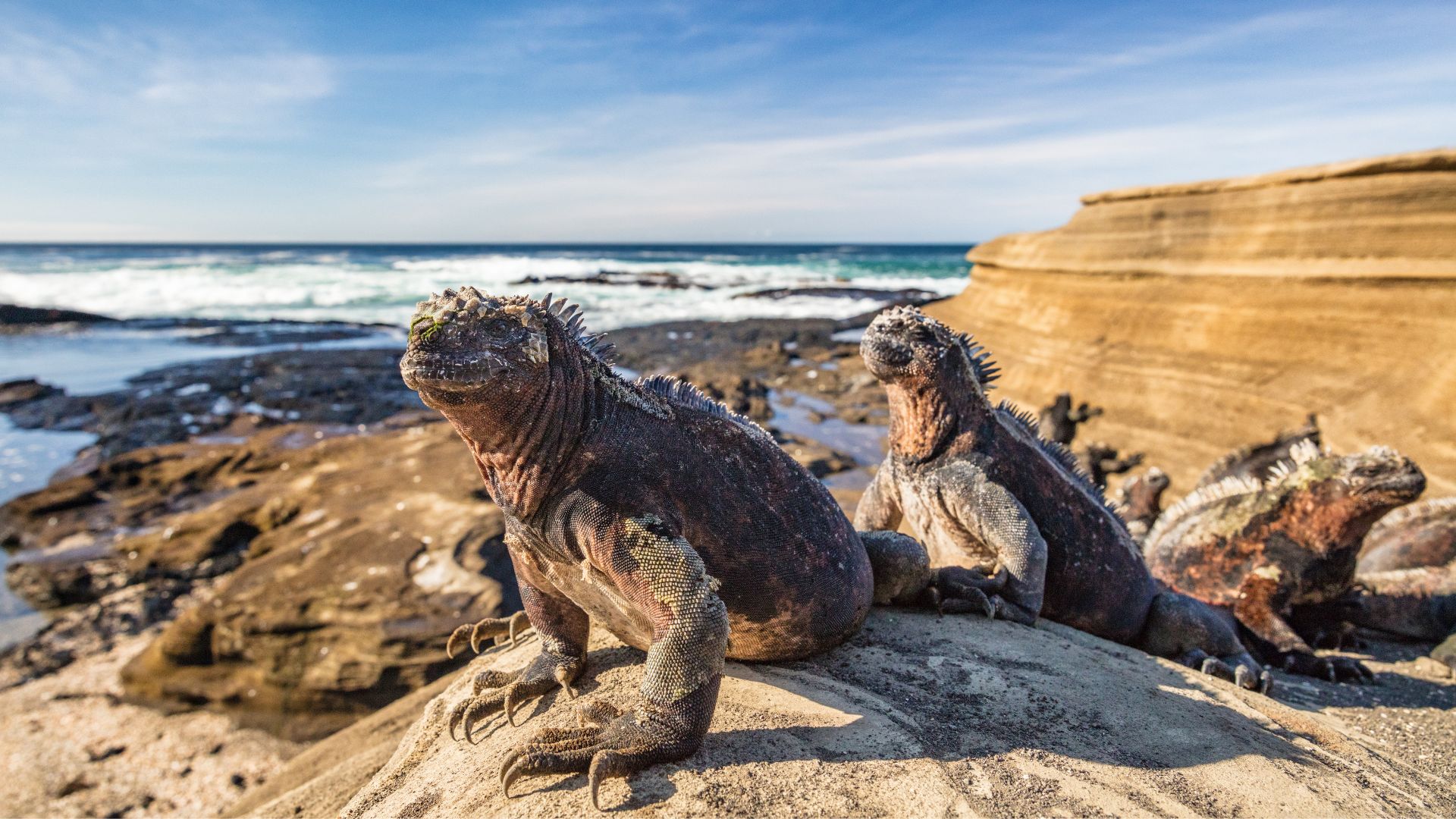
Photo: Maridav
Its black beach is located on the west side of the island and is the main attraction of the island. Its volcanic tuff deposits have favoured the formation of this special black sand beach.
This site is called Puerto Egas because there was an attempt to start the exploitation of salt, which failed. After all, the price of salt on the continent was very low and did not justify its exploitation in the Galapagos. The project and the infrastructure were left abandoned.
Breakfast / Lunch / Dinner
Day 10 ( Wednesday) : Rabida Island & Chinese Hat
AM: Rabida Island
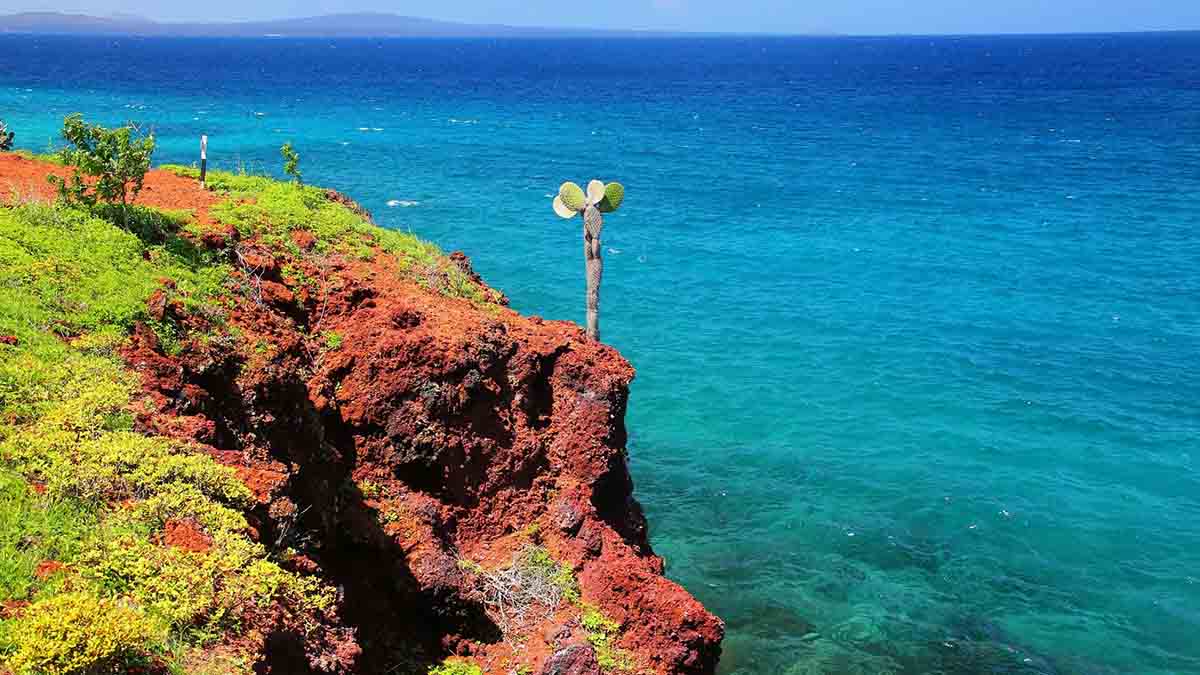
Photo: Donyanedomam
Rábida Island is unique due to the red colour that colours all rocks and sand. The volcanic material on this island is very porous and external factors such as rain, salty water, and sea breeze have acted as oxidising agents.
A short walk along a trail leads you to a coastal lagoon behind the beach, which allows you to observe land birds such as finches, doves, yellow warblers, and mockingbirds. At the lagoon, there is a colony of flamingos.
PM: Chinese Hat
This is a small islet located just off the southeastern tip of Santiago Island. It is a recent volcanic cone, shaped like a Chinese hat when seen from the north. On the west, you can see lava formations, formed under the sea and raised upwards, which is why coral heads are found on the lava.
This is an excellent visit for the interpretation of geological features such as lava tubes and lava flows. The landscape is covered by sea lion colonies, marine iguanas, and Galapagos penguins.
Breakfast / Lunch / Dinner
Day 11 (Thursday) : Santa Cruz Island
AM: Black Turtle Cove, Santa Cruz Island
A dinghy ride to Black Turtle Cove, located on the north coast of Santa Cruz, just west of Baltra, offers a window into a quiet hideaway of the Galapagos.
Once in the cove, the boat continues with the engines off and begins to explore the mangrove-protected cove.
Sea turtles feed and mate in the calm waters, and three species of sharks are found here: the black-tip shark, the white-tip shark, and the Galapagos shark.
Groups of spotted rays are also often seen, as well as egrets and herons.
After the visit, you will be transferred to the Baltra airport in time for your flight back to the mainland.



